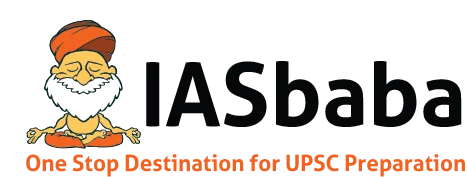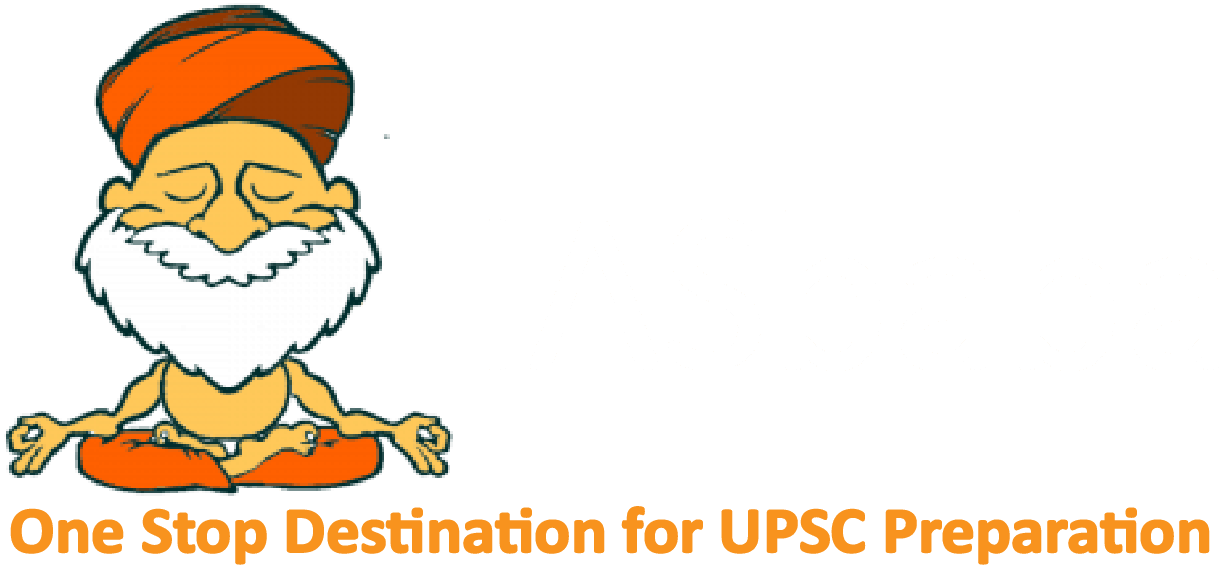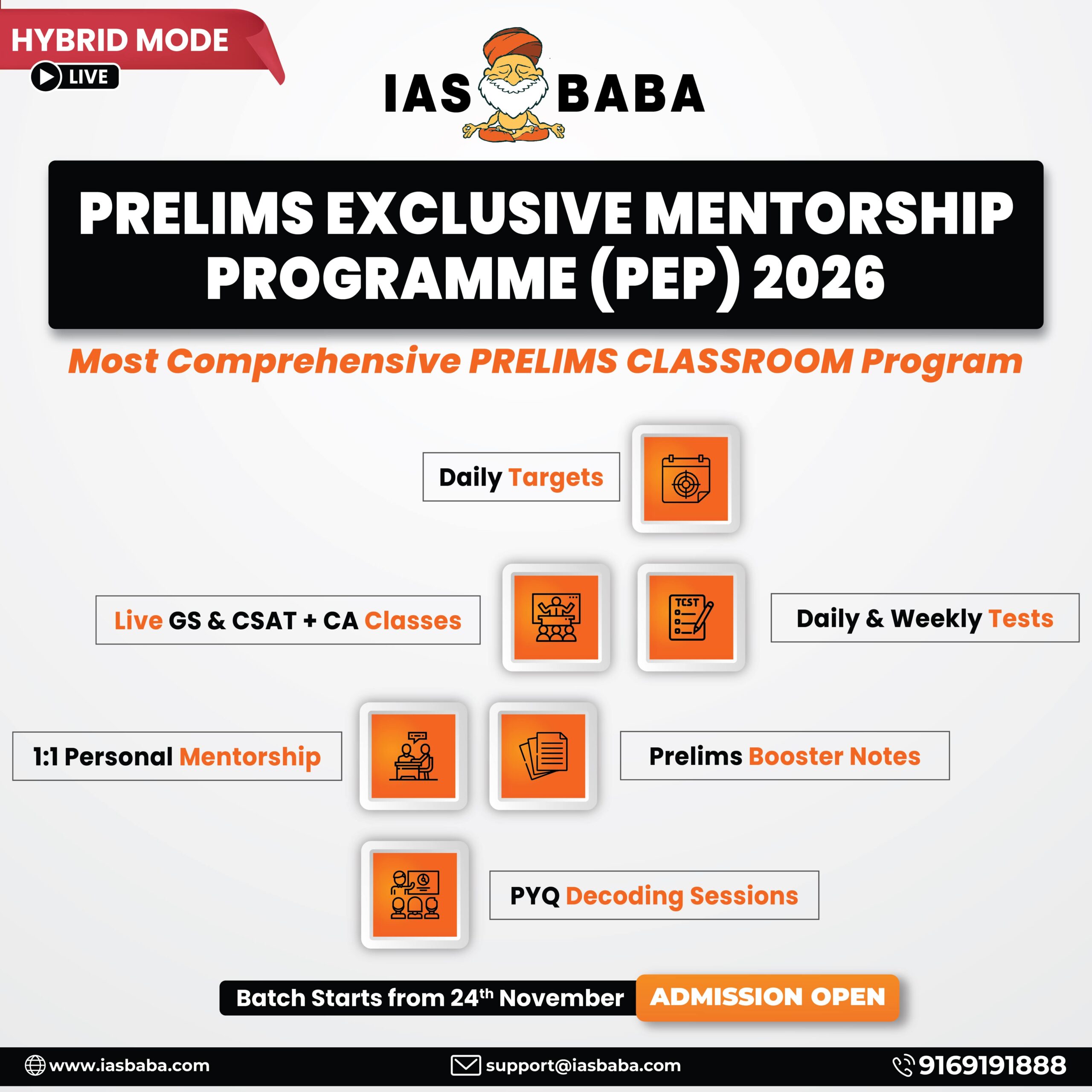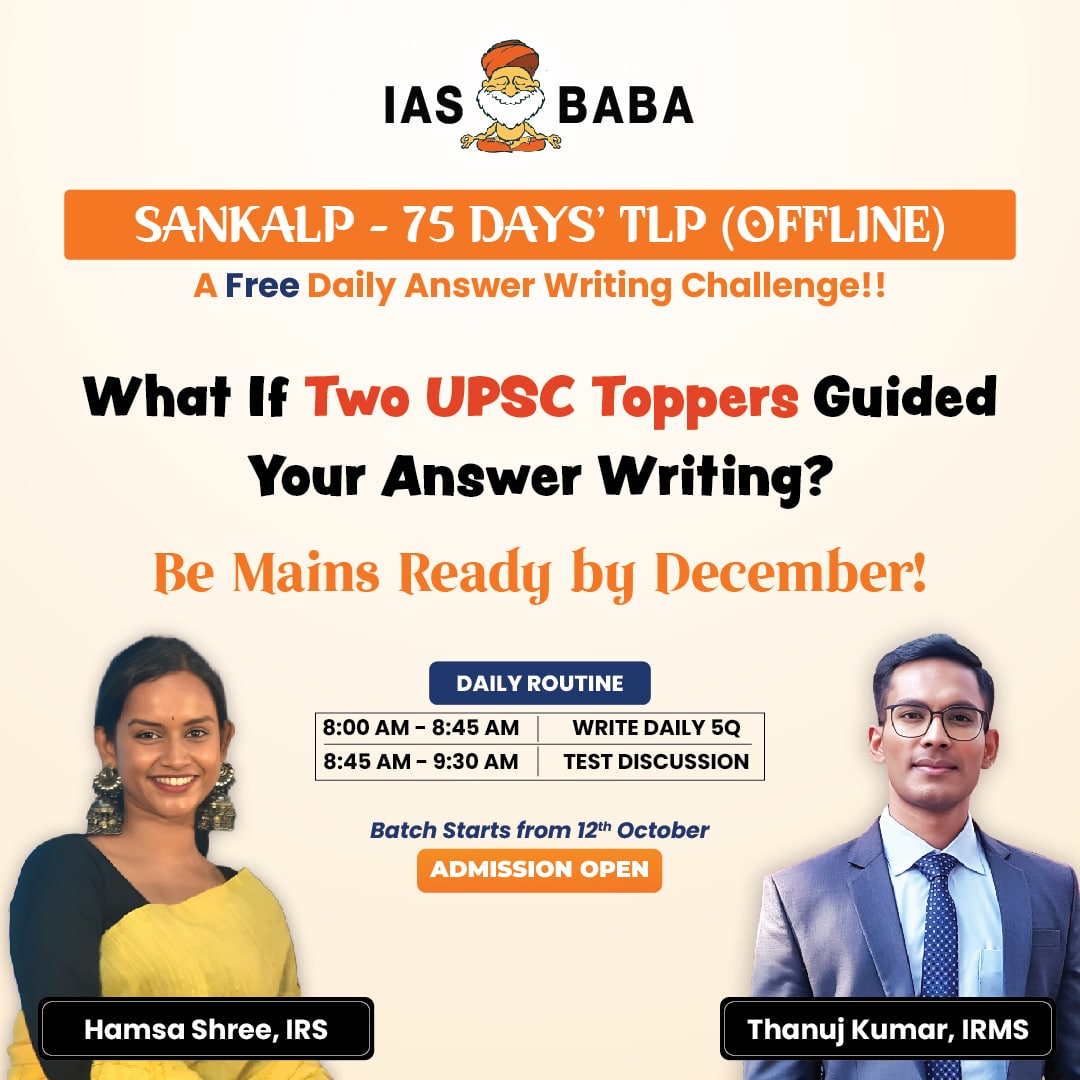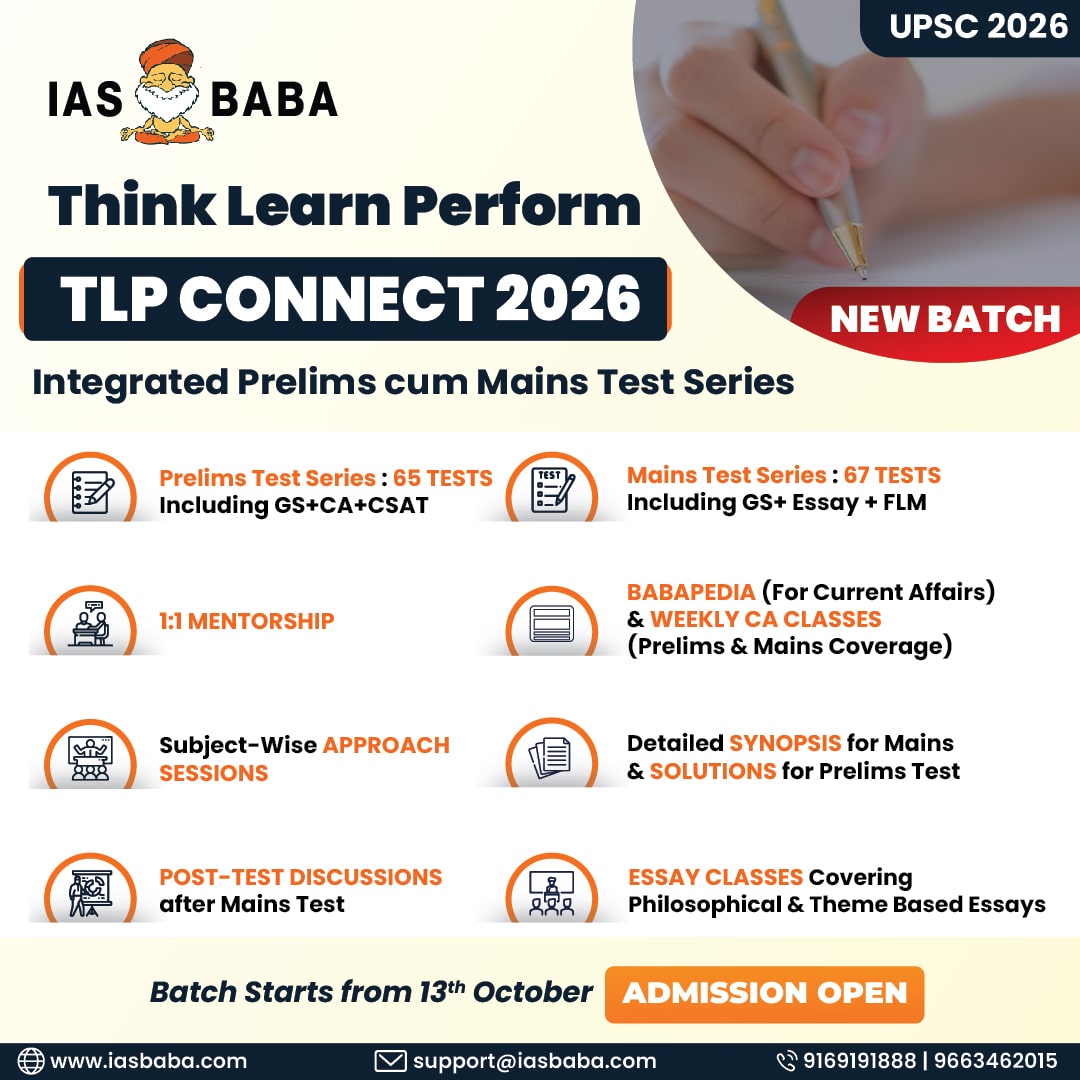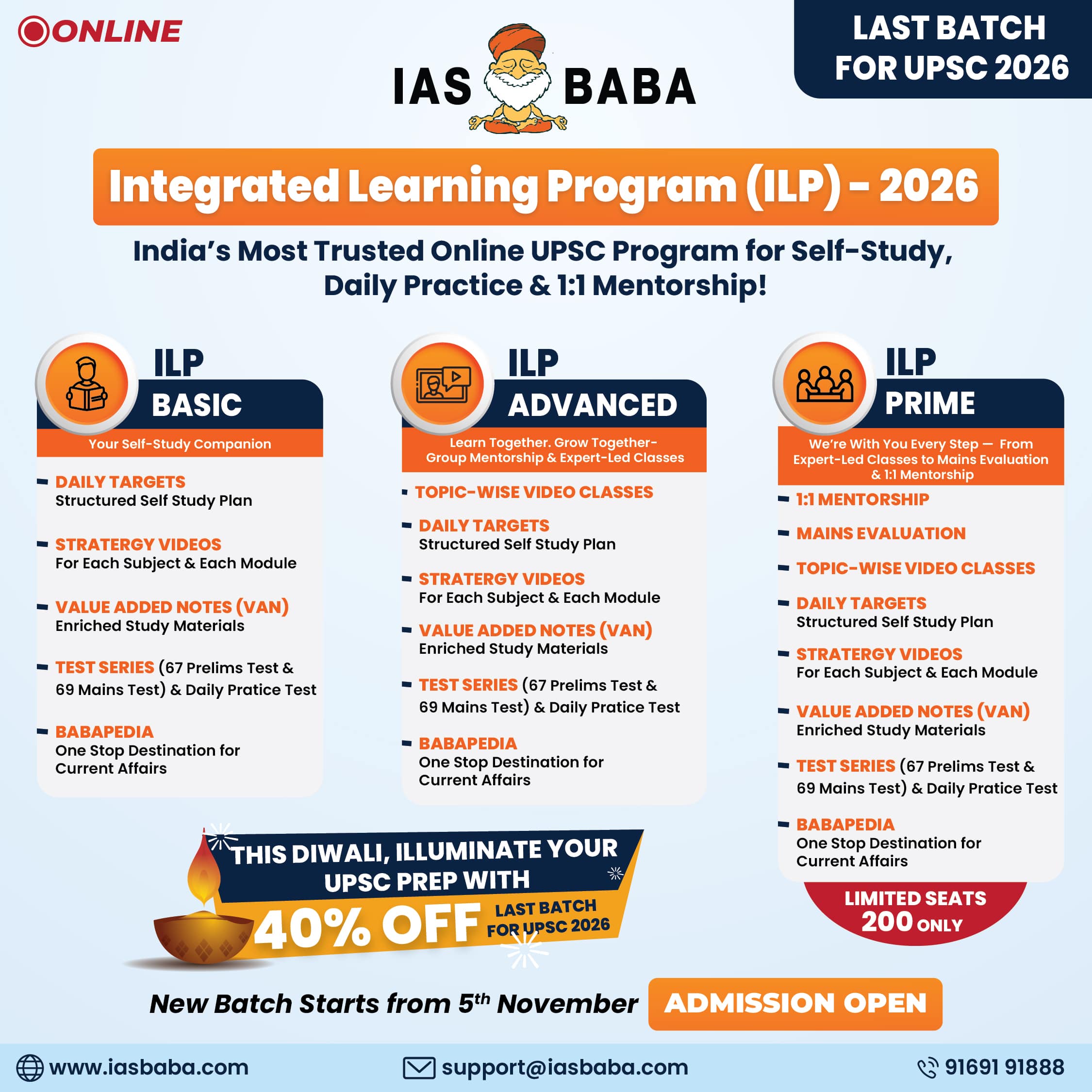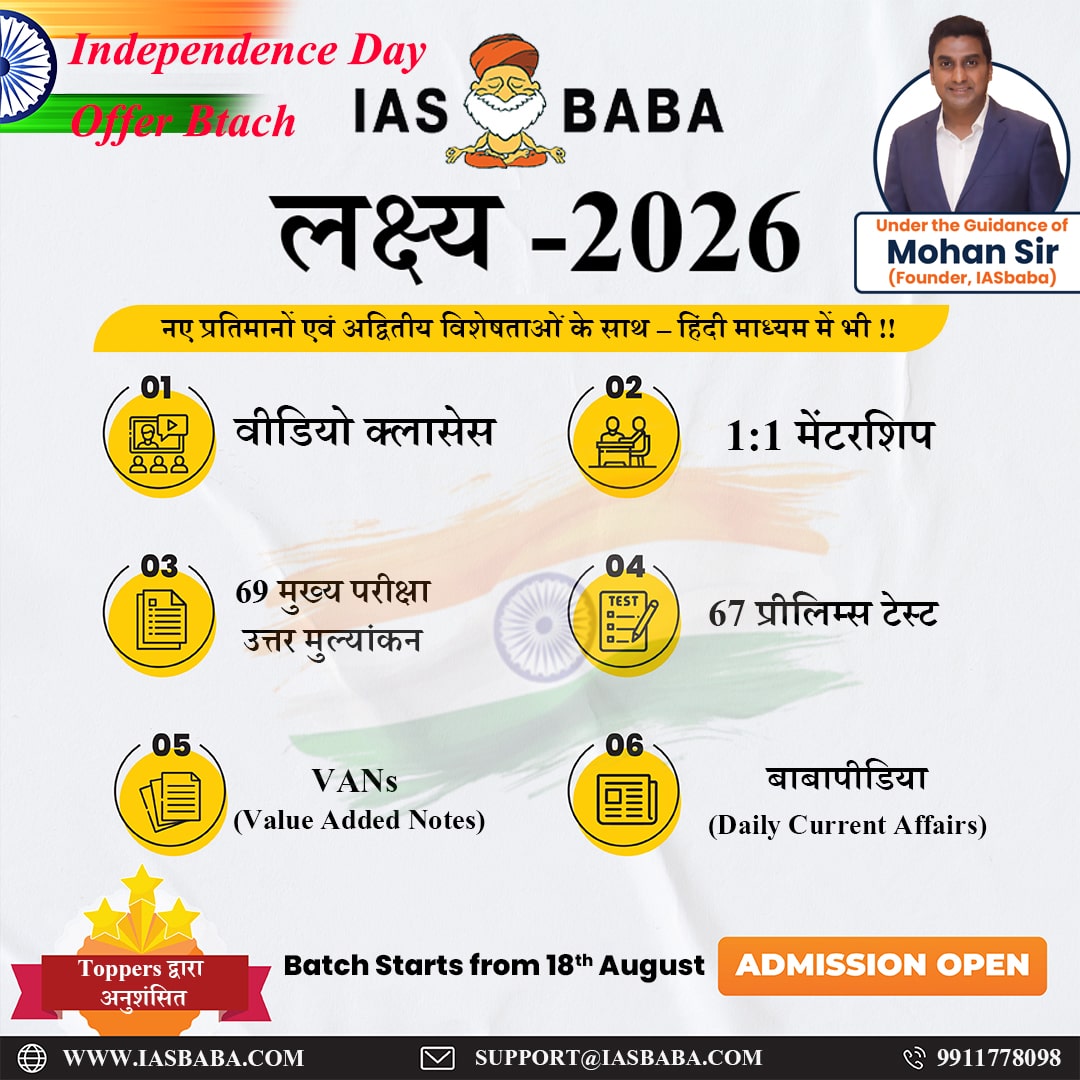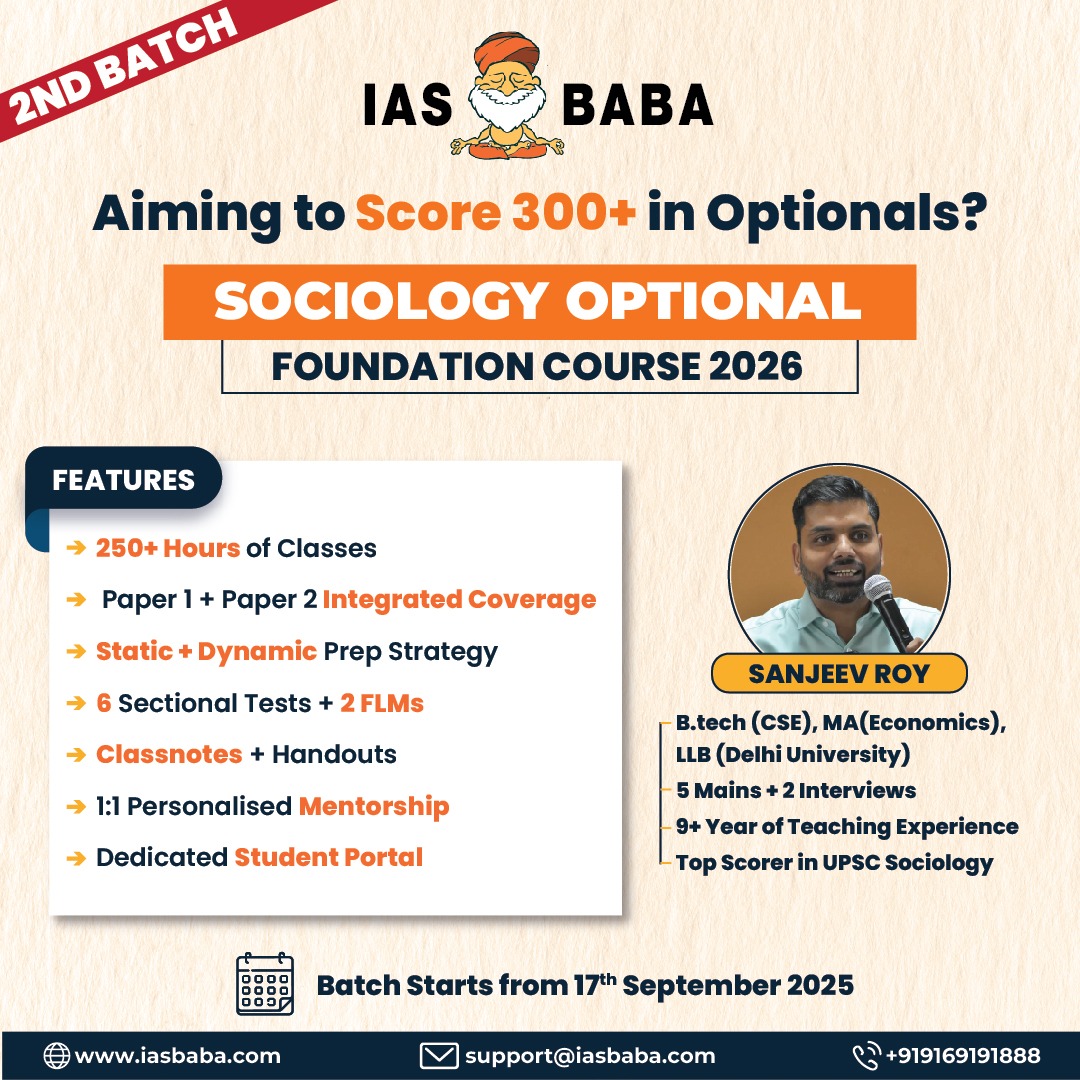IASbaba's Daily Current Affairs Analysis
Archives
(PRELIMS Focus)
Category: Miscellaneous
Context:
- The annual Nobel Week kicked off with three scientists, sharing the Nobel Prize in Medicine for unravelling tantalising aspects of the human immune system.
About Nobel Prize in Medicine 2025:
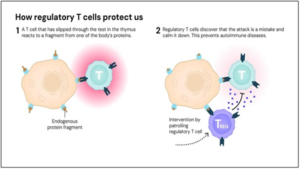
- Awardees: The 2025 Nobel Prize in Physiology or Medicine has been awarded to Mary E. Bruncko, Fred Ramsdell, and Shimon Sakaguchi.
- Awarded for: They were awarded for discovering the mechanism and key constituents of the so-called ‘peripheral immune tolerance’, a fundamental mechanism that prevents our immune system from attacking the body’s own tissues.
- Identification of T-cells: Their collaborative research identified Regulatory T cells (Tregs), specialized immune cells that act as “guardians” to prevent the immune system from mistakenly attacking the body’s own cells. The discovery of the Foxp3 gene revealed its crucial role in the development of Treg cells and in controlling immune tolerance.
- Significance: Their discovery has helped blaze new paths into treating cancer as well as auto-immune disease, a condition by which the immune system ends up harming healthy cells they are meant to protect. This may also lead to more successful transplantations. Several of these treatments are now undergoing clinical trials.
- Contribution of Shimon Sakaguchi:
- He made the first key discovery in 1995. At the time, many researchers were convinced that immune tolerance only developed due to potentially harmful immune cells being eliminated through a process called central tolerance.
- Mr. Sakaguchi showed that the immune system is more complex and discovered a previously unknown class of immune cells, which protects the body from autoimmune diseases.
- Contributions of Mary Brunkow and Fred Ramsdell:
- They made the other key discovery in 2001, when they presented the explanation for why a specific mouse strain was particularly vulnerable to autoimmune diseases.
- They had discovered that mice have a mutation in a gene that they named Foxp3. They also showed that mutations in the human equivalent of this gene triggered a serious autoimmune disease, IPEX.
- Two years after this, Mr. Sakaguchi was able to link these discoveries. He proved that the Foxp3 gene governs the development of the cells he identified in 1995. These cells, now known as ‘regulatory T cells’, monitor other immune cells and ensure that our immune system tolerates our own tissues.
Source:
Category: History and Culture
Context:
- Karnataka Minister countered the demand for a separate religious status for Lingayats, and said that “no force can separate Veerashaivas and Lingayats” in the State.
About Lingayats:
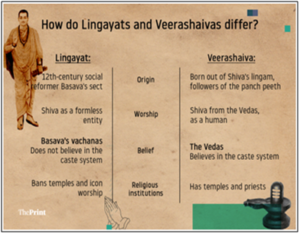
- Nature: Lingayats are followers of 12th-century social reformer Basavanna and his vachana (verses) philosophy, which emphasized equality, social justice, and devotion, rejecting Brahmanical authority, temple worship, and caste distinctions.
- Shaivite: They are a Shaivite sect in Hinduism that emerged in Karnataka during the reign of the Kalachuri dynasty. Basavanna, a minister in the court of Kalachuri King Bijjala (1157-67 CE), was the key proponent of Lingayatism.
- Worship of Ishtalinga: They promoted work as worship and offered spiritual enlightenment for all, including householders and artisans. Lingayats worship ishtalinga, a formless God, and reject rituals, focusing on honest labour and social redistribution.
- Rejected Brahmanical Authority: They prioritized direct worship of Shiva and rejected the Vedic authority, the caste system, and Brahmin ceremonies.
- Fostered social reforms: They encouraged post-puberty marriage, re-marriage of widows, and the promotion of inter-caste relationships.
- Anubhava Mantapa: Basavanna established the Anubhava Mantapa, a “Hall of Experience,” where people from all social backgrounds could gather, discuss religious and social issues, and share their experiences.
- Questioned theory of re-births: They bury their dead instead of cremating them (as they believe that devotees will be united with Shiva and will not return to this world).
- Gave importance to compassion: They stressed the importance of being a compassionate and socially productive human being in this world and in this life.
- Kayaka as means of worship: They considered all forms of labour and means of livelihood (kayaka) a form of worship. They provided the honest earnings from labour (kayaka), which are primarily used for social redistribution, called ‘dasoha’.
- Distribution: Lingayats are found primarily in Karnataka, where Lingayats comprise a major population. They are also found in significant numbers in Maharashtra and Andhra Pradesh.
- Difference with Veershaivas: Veerashaivism, a sect deeply rooted in the Vedas and Agamas, centres solely around the worship of Lord Shiva as mentioned in Hindu mythology. Its followers are devoted to five religious centres known as Pancha Peethas, which are established similarly to the four peethas set up by Adi Shankara.
Source:
Category: Polity and Governance
Context:
- Finance Minister said that government intends to amend Civil Liability for Nuclear Damage Act as deliberations within the government continue on bringing in new legislation to allow the private sector to operate nuclear plants in India.
About Civil Liability for Nuclear Damage Act (CLNDA), 2010:
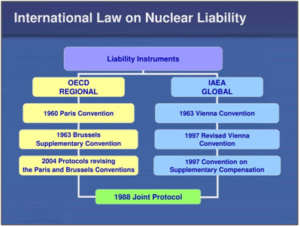
- Nature: It is India’s nuclear liability law ensuring compensation for victims and defining responsibility for nuclear accidents.
- In sync with CSC: It aligns with the Convention on Supplementary Compensation (CSC, 1997), adopted post-Chernobyl to set global minimum compensation standards. India ratified CSC in 2016.
- Follows global conventions: It follows the nuclear liability principles of the Vienna Convention 1963, Paris Convention 1960, and Brussels Supplementary Convention 1963.
- Puts a cap on operator liability: The Act imposes strict, no-fault liability on operators, caps operator liability at Rs 1,500 crore.
- Provision for intervention of government: If damage claims exceed Rs 1,500 crore, the CLNDA expects the government to intervene. The government’s liability is capped at the rupee equivalent of 300 million Special Drawing Rights (SDRs), roughly Rs 2,100 to Rs 2,300 crore.
- Nuclear Damage Claims Commission: The Act also establishes a Nuclear Damage Claims Commission to ensure fair compensation and resolve conflicts.
- Supplier Liability: India’s CLNDA is unique as it introduces supplier liability under Section 17(b), enabling operators to seek recourse against suppliers; unlike global frameworks like the CSC, which place liability solely on the operator.
- Broadens supplier responsibility: Unlike CSC, which allows recourse only for contractual breaches or intentional acts, CLNDA broadens supplier accountability to cases where a nuclear incident results from a supplier’s or their employee’s act, including the supply of defective equipment, materials, or sub-standard services.
Source:
Category: Polity and Governance
Context:
- Recently, the U.K.’s House of Commons passed the Terminally Ill Adults (End of Life) Bill, reigniting a global conversation about euthanasia.
About Passive Euthanasia:
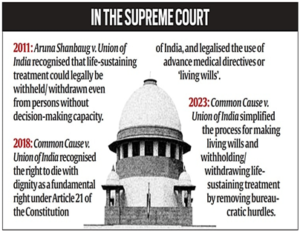
- Definition: Passive euthanasia refers to the intentional withholding or withdrawal of medical treatments or life-sustaining interventions, allowing a person to die naturally from their underlying condition.
- Mechanisms: This can include stopping treatments like ventilators, feeding tubes, or medications that keep the patient alive.
- Implementation: Decisions for passive euthanasia are typically made based on the patient’s wishes, advance directives, or through family members and healthcare proxies when the patient cannot make decisions themselves.
- Legality in India: A five-judge bench of the Supreme Court in Common Cause vs Union of India (2018) recognised a person’s right to die with dignity under Art. 21. It said that a terminally ill person can opt for passive euthanasia and execute a living will to refuse medical treatment.
- Draft guidelines on passive euthanasia: The guidelines for withdrawing or withholding medical treatment in terminally ill patients are based on four key conditions:
- The individual has been declared brainstem dead.
- There is a medical assessment that the patient’s condition is advanced and unlikely to improve with aggressive treatment.
- The patient or their surrogate has provided informed refusal to continue life support after understanding the prognosis.
- The procedure follows the directives set by the Supreme Court.
- Legality in other parts of the world: Euthanasia is legal in several countries such as Netherlands, Belgium, Luxembourg, and Spain.
- Difference with Active euthanasia: Active euthanasia refers to the physician deliberate act, usually the administration of lethal drugs, to end an incurably or terminally ill patient’s life. In India, active euthanasia is a crime.
Source:
Category: Economy
Context:
- The Supreme Court of India decided to examine a plea challenging the constitutional validity of the Securities Transaction Tax (STT), a direct tax levied on securities transactions through a listed stock exchange, as imposed under the Finance Act, 2004.
About Securities Transaction Tax (STT):
- Nature: It is a direct tax charged on the purchase and sale of securities listed on the recognized stock exchanges in India.
- Introduction: Finance Act 2004 introduced Securities Transaction Tax (STT), as a clean and efficient way of collecting taxes from financial market transactions. It is levied and collected by the central government of India.
- Regulation: STT is governed by Securities Transaction Tax Act (STT Act), and STT Act has specifically listed various taxable securities transactions, i.e., transactions on which STT is leviable.
- Taxable securities: These include equities, derivatives, or equity-oriented mutual funds investment units (excluding commodities and currency).
- Contract notes: The charges and rate of STT are reflected on the contract notes which a broker provides to its clients for every execution of trades.
- Excluded for certain transactions: The rate of taxation is different for different types of securities. STT is not applicable to off-market transactions or to commodity or currency transactions.
- Liability: The liability of applying the STT is on the broker when the client undertakes transactions in the stock market. The collected amount is then paid to the government.
Source:
(MAINS Focus)
(GS Paper 2: Indian Polity – Judiciary, Governance)
Context (Introduction)
In recent debates, the Indian judiciary has often been portrayed as a “hurdle” to economic progress and governance. Sanjeev Sanyal, a member of the PM’s Economic Advisory Council, recently termed it the “single biggest obstacle to India becoming Viksit Bharat.”
He argued that unless judicial reforms are accelerated, India’s vision of becoming a developed nation by 2047 will remain unfulfilled.
Misplaced Blame and Structural Issues
The data asserts that much of the judiciary’s burden does not arise from its own inefficiency but from executive and legislative shortcomings.
Excessive Government Litigation:
- The government is the largest litigant in India, responsible for nearly half of all cases. Ministries, public enterprises, and tax authorities routinely appeal against orders, often up to the Supreme Court, clogging the system with avoidable disputes.
- Flawed Laws and Vague Drafting:
The judiciary is often forced to interpret poorly drafted, vague, and overlapping laws. The government’s recent “criminal law reforms” largely changed nomenclature without addressing the colonial legacy of imprecision and complexity in Indian legislation. - Contract Enforcement Problems:
The “99-to-1 problem” — where 99% of contracts are not enforced efficiently — stems not from judicial incapacity alone, but from governmental behaviour as a contractor. Arbitrary tender processes, vague contracts, and delayed payments often result in unnecessary litigation.
Thus, the real bottleneck lies in legislative quality and executive discipline, not merely in judicial functioning.
Misunderstanding of Judicial Workload
Critics often misrepresent judges as inefficient due to limited working hours and vacations but the judges work far beyond visible court hours, dedicating evenings, weekends, and holidays to drafting and reading case files.
A High Court judge may handle 50 to 100 cases daily, and each order involves substantial legal reasoning. Moreover, lower judiciary judges often face poor infrastructure, limited staff, and administrative burdens, exacerbating delays.
Hence, equating visible court sittings with productivity reflects a shallow understanding of the judicial process.
Colonial Legacy and Procedural Burden
Another major dimension is the colonial inheritance of the judicial system. India’s legal architecture was designed by the British for control, not for efficiency or accessibility. The postcolonial state largely retained this structure.
The system’s complexity — outdated procedures, excessive paperwork, and formalism — continues to hinder timely justice delivery. Although India has introduced digitisation and e-courts, deeper procedural reforms are necessary.
Broader Systemic Problems
The judiciary’s problems are intertwined with larger systemic flaws:
- Understaffing:
India has fewer than 20 judges per million people, far below global averages. - Infrastructure Deficiency:
Many court complexes lack basic facilities like proper chambers, libraries, or record management systems. - Delayed Appointments:
Vacancies persist due to delays in the collegium and executive approval process. - Public Misunderstanding:
The public often perceives judicial delay as deliberate rather than structural.
Hence, while judicial reform is necessary, simplistic vilification does not address the core challenges.
Way forward
Adopting a cooperative reform model rather than blame-shifting. This include:
- Improving legislative drafting quality to reduce interpretational disputes.
- Curtailing unnecessary government litigation by enforcing accountability within ministries.
- Enhancing judicial infrastructure and digitisation in lower courts.
- Filling vacancies promptly through transparent mechanisms.
- Strengthening case management systems and alternative dispute resolution (ADR).
- Promoting legal awareness among citizens and government departments.
- Reforms must therefore target the ecosystem of justice delivery — not just the judiciary as an isolated institution.
Conclusion
Criticising the judiciary as the “biggest hurdle” to India’s growth narrative is both misguided and counterproductive. While acknowledging that delays and inefficiencies exist, the judiciary operates within constraints largely imposed by legislative ambiguity, executive overreach, and colonial procedural remnants.
Reforming the justice system requires collaboration among all three organs of the state — legislature, executive, and judiciary — along with robust institutional support. Instead of scapegoating, India must strengthen its judicial ecosystem to truly achieve the vision of a Viksit Bharat.
UPSC Mains Practice Question
“Criticism of the Indian judiciary as a hurdle to development reflects a misunderstanding of systemic governance failures.” Discuss in the context of recent debates on judicial reform in India. (250 words, 15 marks)
(GS Paper 1: Social issues, GS Paper 2: child rights & governance, Essay)
Context (Introduction)
The latest National Crime Records Bureau (NCRB) data highlights a disturbing trend — a sharp surge in crimes against children in 2023, especially in the states of Assam, Rajasthan, and Kerala.
While the overall number of cases across India increased by about 25%, these three states alone witnessed an unprecedented spike — Assam (99.5%), Kerala (105.9%), and Rajasthan (70.1%).
This data underscores both the growing vulnerability of children and the evolving dynamics of law enforcement, awareness, and reporting mechanisms in India. However, experts caution that a rise in numbers may also reflect improved reporting and legal enforcement, rather than merely an increase in actual crimes.
The Data and Its Key Highlights
- National Trend:
Across India, recorded crimes against children rose by nearly 25% in 2023 compared to the 2018–2022 average. - State-wise Surges:
- Assam: From around 5,100 cases (2018–2022 average) to over 10,000 in 2023 — a 99% increase.
- Kerala: From 2,800 to 5,900 cases — a 106% increase.
- Rajasthan: From 6,200 to 10,500 cases — a 70% rise.
- Types of Crimes:
The increase spans across categories — child sexual offences (POCSO Act), kidnapping/abduction, and child marriage violations. - Map & Charts Analysis:
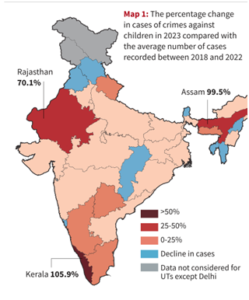
-
- Map 1 shows these states as the top three with >70% increase in child crime rates.
- Chart 2 shows Assam’s massive spike in Prohibition of Child Marriage Act (PCMA) cases.
- Chart 3–5 show rising cases under POCSO Act and kidnapping/abduction in all three states.
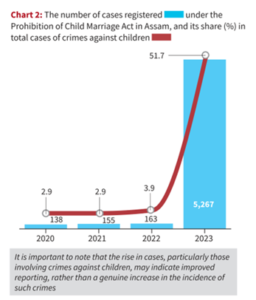
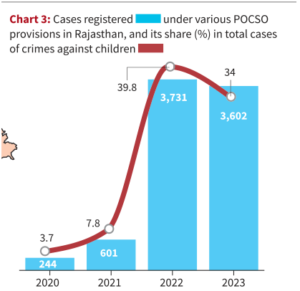
Major Factors Behind the Surge
- (a) Improved Reporting & Awareness
- The increase may partly reflect better reporting mechanisms, public awareness campaigns, and child protection helplines such as 1098.
- In Kerala and Assam, digital police portals and child-friendly reporting cells have improved case documentation.
- (b) Crackdown on Child Marriage (Assam)
- The Assam government initiated a statewide crackdown on child marriage in 2023, invoking the Prohibition of Child Marriage Act, 2006.
- Thousands of arrests and FIRs inflated overall child-related crime figures.
- Chart 2 shows PCMA cases forming over 51% of total child-related crimes in Assam — indicating a legal enforcement surge rather than a rise in actual incidents.
- (c) Expansion of Legal Provisions (Kerala & Rajasthan)
- Many offences previously booked under IPC are now recorded under POCSO Act (2012), broadening the definition of sexual offences.
- Chart 5 shows Kerala registering over 4,000 POCSO cases in 2023, nearly double from 2020.
- (d) Judicial and Administrative Focus
- The creation of Special POCSO Courts and fast-track mechanisms has encouraged more victims and families to come forward.
- However, conviction rates remain low, indicating gaps between reporting and justice delivery.
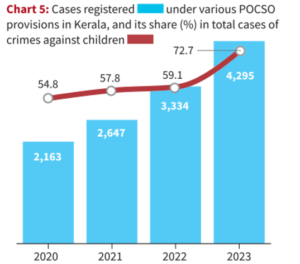
The Broader Picture
- Rising Vulnerability:
Increased digital exposure, child labour, trafficking, and early marriages continue to put children at risk. - Data Interpretation Challenges:
A rise in numbers does not always equate to rising crime incidence; it may signify improved registration and sensitisation among police and citizens. - Disparities Across States:
States like Uttar Pradesh, Delhi, and Maharashtra, despite higher populations, recorded smaller percentage increases — suggesting better baseline reporting or policy consistency.
Governance and Policy Dimensions
- Legislative Framework:
- POCSO Act, 2012 – criminalises all sexual offences against minors.
- Juvenile Justice (Care and Protection of Children) Act, 2015 – ensures child rehabilitation.
- Prohibition of Child Marriage Act, 2006 – penalises child marriage facilitators.
- Institutional Gaps:
- Lack of coordination between police, child welfare committees, and judiciary.
- Inconsistent data collection and underreporting in rural regions.
- Inadequate victim rehabilitation and psychological support.
- Way Forward:
- Strengthen child protection units and community vigilance systems.
- Train police and teachers to identify abuse early.
- Promote digital awareness campaigns on child rights.
- Integrate NCRB data with real-time monitoring under the National Commission for Protection of Child Rights (NCPCR).
- Ensure fast-track trials with victim-friendly approaches.
Conclusion
The surge in child-related crime statistics in Assam, Kerala, and Rajasthan reflects a complex mix of heightened vigilance, stronger laws, and persistent social challenges.
While improved reporting is a positive trend, the data also signals the need for sustained policy attention toward child safety, law enforcement efficiency, and preventive education.
Protecting children must remain central to India’s vision of inclusive social justice and human security.
UPSC Mains Practice Question
“The recent surge in crimes against children in India may signify better reporting rather than worsening safety.” Critically analyse this statement in the context of NCRB 2023 data. (250 words, 15 marks)
